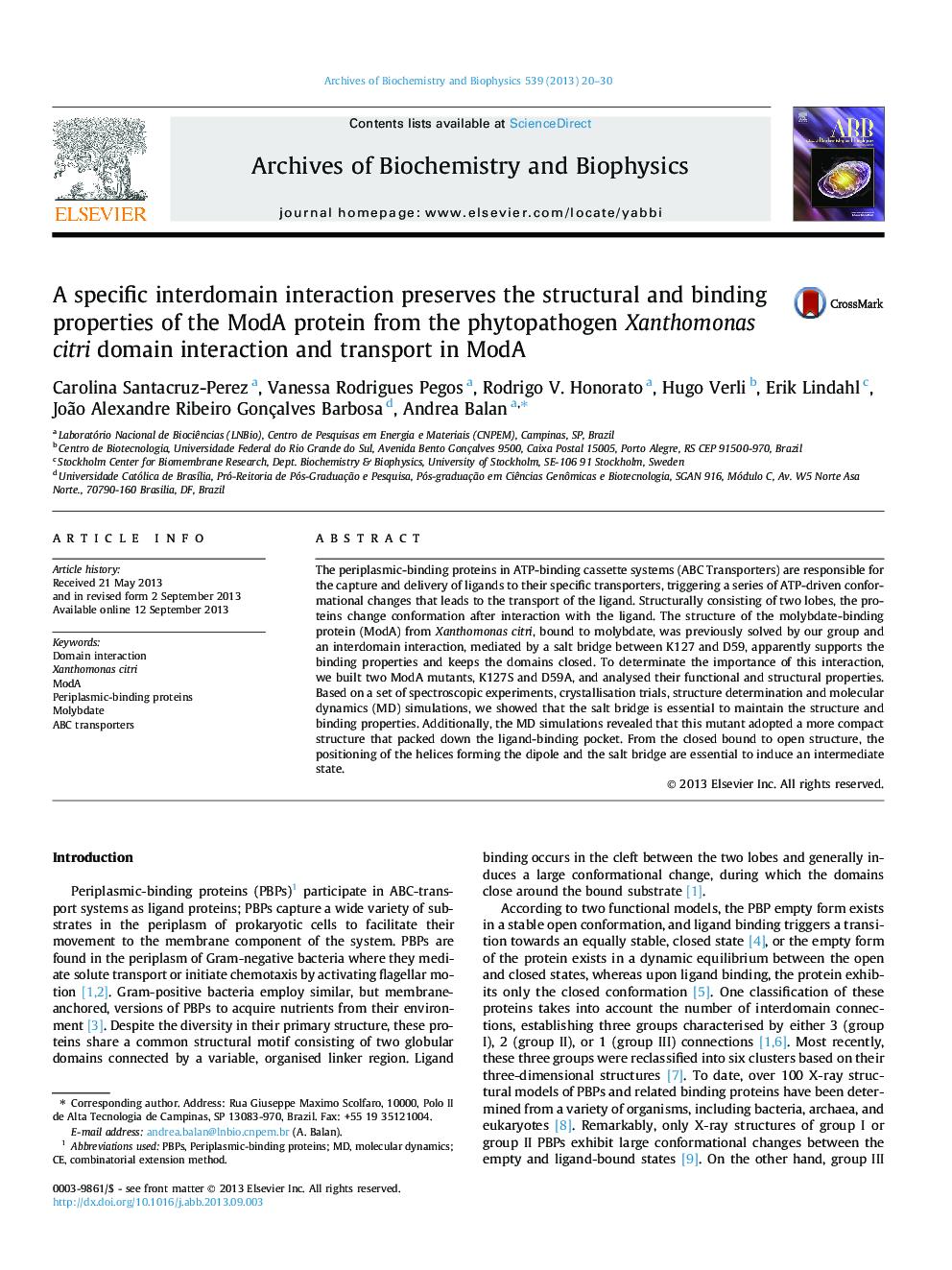| Article ID | Journal | Published Year | Pages | File Type |
|---|---|---|---|---|
| 8290513 | Archives of Biochemistry and Biophysics | 2013 | 11 Pages |
Abstract
The periplasmic-binding proteins in ATP-binding cassette systems (ABC Transporters) are responsible for the capture and delivery of ligands to their specific transporters, triggering a series of ATP-driven conformational changes that leads to the transport of the ligand. Structurally consisting of two lobes, the proteins change conformation after interaction with the ligand. The structure of the molybdate-binding protein (ModA) from Xanthomonas citri, bound to molybdate, was previously solved by our group and an interdomain interaction, mediated by a salt bridge between K127 and D59, apparently supports the binding properties and keeps the domains closed. To determinate the importance of this interaction, we built two ModA mutants, K127S and D59A, and analysed their functional and structural properties. Based on a set of spectroscopic experiments, crystallisation trials, structure determination and molecular dynamics (MD) simulations, we showed that the salt bridge is essential to maintain the structure and binding properties. Additionally, the MD simulations revealed that this mutant adopted a more compact structure that packed down the ligand-binding pocket. From the closed bound to open structure, the positioning of the helices forming the dipole and the salt bridge are essential to induce an intermediate state.
Related Topics
Life Sciences
Biochemistry, Genetics and Molecular Biology
Biochemistry
Authors
Carolina Santacruz-Perez, Vanessa Rodrigues Pegos, Rodrigo V. Honorato, Hugo Verli, Erik Lindahl, João Alexandre Ribeiro Gonçalves Barbosa, Andrea Balan,
